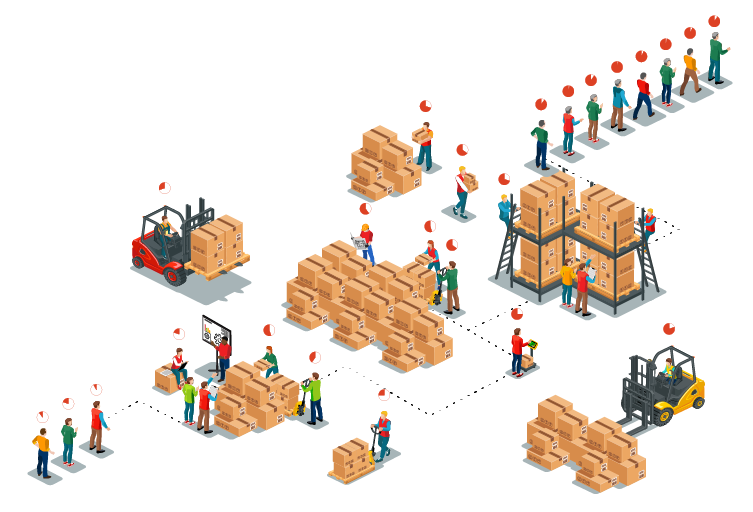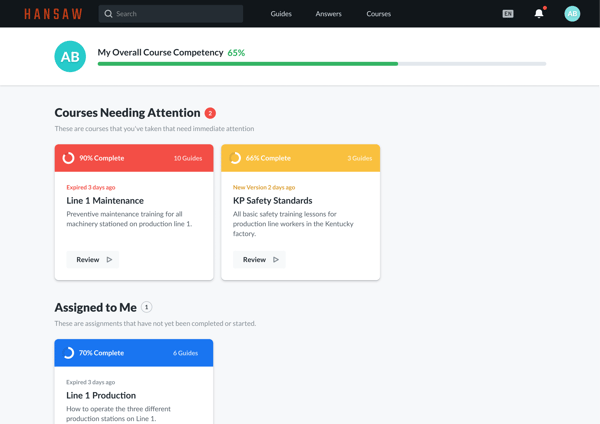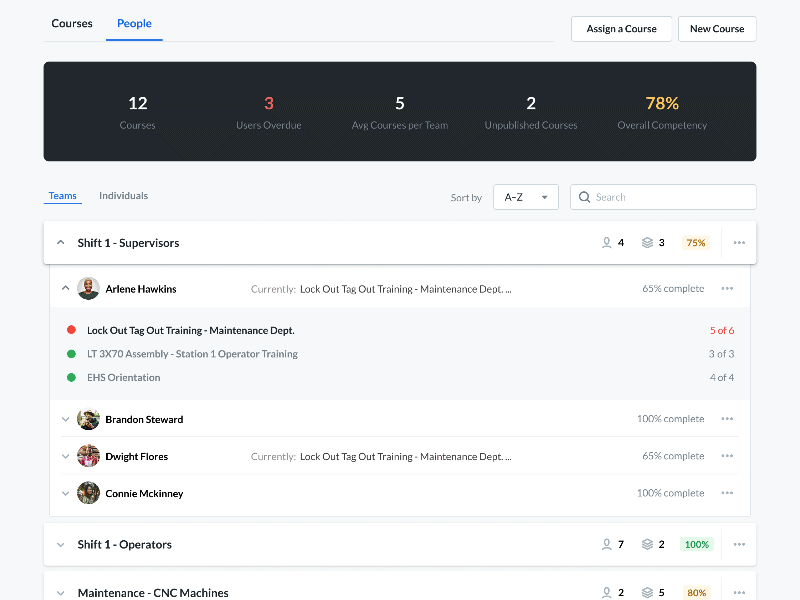
Training
5 min read
How To Cross-Train Your Workforce

Cross-training is an essential component of any successful manufacturing company. The flexibility it creates enables your operations to continue regardless of what operators are on the line. Cross-training adds more skills to the factory floor and enables companies to better leverage the skills of its workforce. It also gives expert workers the opportunity to mentor new employees and pass along valuable knowledge.
What is Cross-Training?
Cross-training is the ongoing practice of becoming proficient in a wide variety of tasks outside of a given role. For the industrial workforce, this means that recurring training sessions must take place. Managers must reinforce training standards to maintain best-practices and skill levels.
For example, a line operator who has run the same machines for 30 years might get sick. With no one else able to do his job, operations scramble to keep up. A good cross-training program makes it possible to maintain production without hesitation. Allowing you to identify another person with the right knowledge and skills to fill in.
Why Should My Company Cross-Train?
With an effective cross-training program, workers can seamlessly transition between stations, lines, or shifts, when demand changes or personnel shortages occur. This strategy creates a more adaptable and confident workforce while protecting your business against events beyond your control.
Cross-training isn’t only a precautionary measure. By developing skills outside of employees’ normal job functions, companies will:
- Increase job satisfaction
- Reduce turnover
- Prevent injuries
- Create a more flexible workforce
- Grow the capability of your operations
Dozuki has worked with hundreds of companies to standardize their training programs. Through this experience, we’ve learned effective tactics to sustain any cross-training program.
1) Make Training Information More Accessible
Learning a new task traditionally requires employees to seek mentorship or some form of on-the-job training. But experienced mentors are retiring at a dangerous rate. Companies need to record best-practices to protect knowledge drain.
Start by capturing the expertise of your veteran workers and documenting tribal knowledge. Then, provide accessible resources for employees to learn new skills and solve problems - uninhibited by mentorship availability.
2) Reward Skills Development
An incentivized skills development program shows that management supports time spent learning. Even small rewards will motivate your workforce to take initiative. It's crucial to demonstrate that employees’ skills add real value to the organization. This allows a sustainable cultural adoption of your cross-training program, long-term.
3) Reduce Workload for New Tasks
Expecting cross-trained employees to perform at max capacity is a recipe for failure. Acknowledge that employees cannot do other jobs as well as the person who does it consistently. All new skills have a learning curve.
Reduce the workload for employees performing new tasks. It’s important for your employees to feel supported and encouraged when taking on new tasks. Work capacity will increase naturally as they gain more experience.
4) Enable Self-Paced Learning
Motivating employees to make time for cross-training can be difficult. Training for new roles can feel like a distraction from normal job responsibilities. And although every business is busy, downtime still exists.
Rather than trying to always schedule and coordinate explicit cross-training sessions, enable self-paced learning when possible. This will give your employees the flexibility to learn at any time, in any environment.
5) Create a Skills Matrix
A skills matrix is a common tracking and management tool for cross-training. The tool allows you to keep tabs of skill levels across your organization. This will also allow you to move shifts or fill positions when the unexpected happens.
Skills are traditionally tracked in complex spreadsheets. Requiring frequent manual updates by a training manager. Today, purpose-built training tools like Dozuki can manage skills development and training automatically.
6) Retrain Employees Consistently
A cross-training program should require retraining when procedures change or processes improve. It's important for your training program to reflect the most current documented standards.
Retraining helps employees stay sharp with tasks that they may not perform often. The cadence of retraining like this is relative to the complexity of your procedures. Retrain your employees consistently so they feel confident performing any task.
Cross-Training is About People
Cross-training develops your workforce to become more capable employees.
This creates sweeping ripple effects across your organization and it's culture. Invest in the people behind your business, and the rewards will follow.

Topic(s):
Training
Related Posts
View All Posts
Training
Why HR Shouldn't Manage Your Technical Skills Training
6 min read
Amid the Silver Tsunami, HR departments are hustling to onboard and fill personnel gaps, but they can’t predict the evolving demands of your operations. Manufacturing...
Continue Reading
Frontline Digital Transformation
Where is Your Implicit Knowledge Hiding?
5 min read
Implicit (tacit) knowledge is difficult to communicate and often remains isolated in the heads of employees. However, this accumulation of operational skills and insights has...
Continue Reading
Continuous Improvement
How to Create a Culture of Knowledge Sharing and Continuous Improvement
7 min read
If a proper culture of knowledge sharing is in place, the skills that experienced employees possess can be leveraged to improve your business and culture. Every manager knows...
Continue Reading





